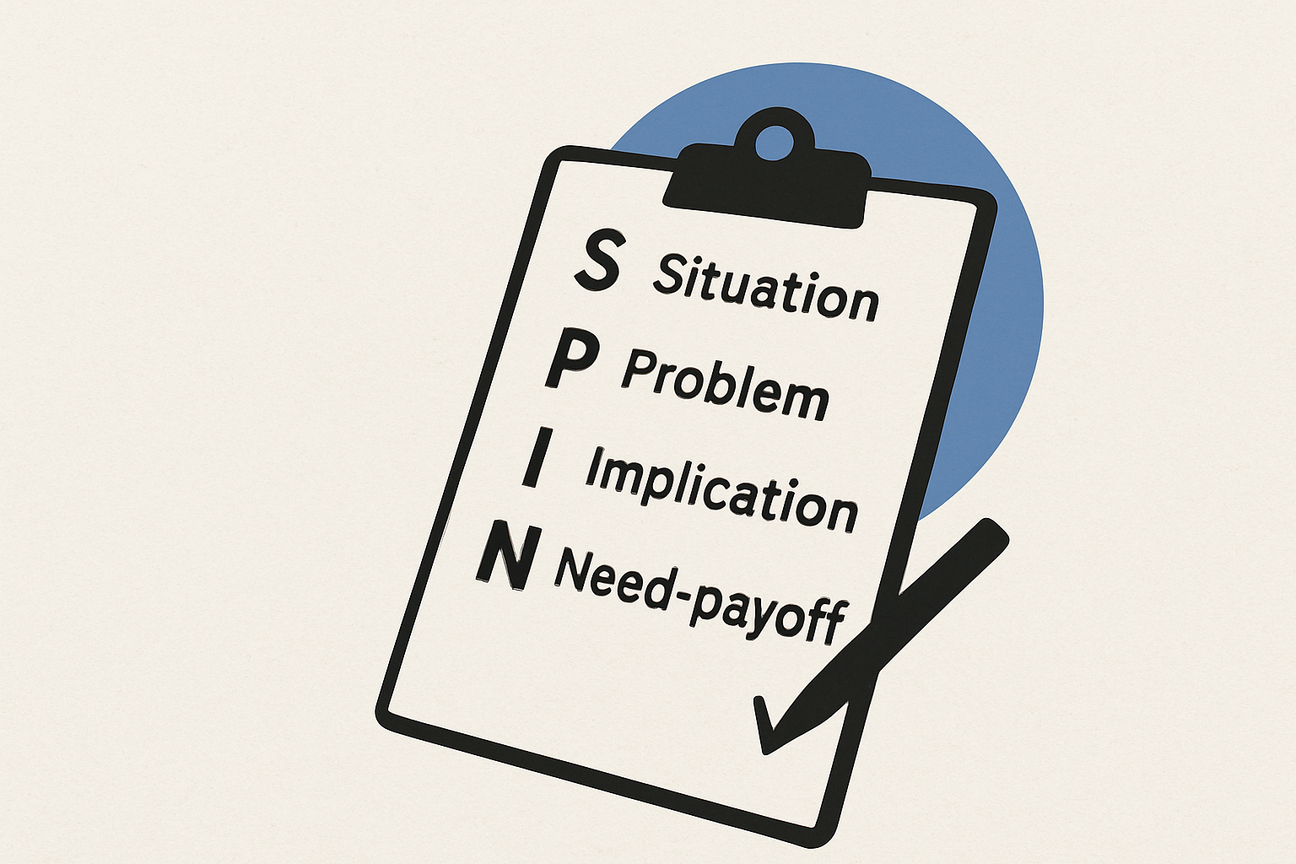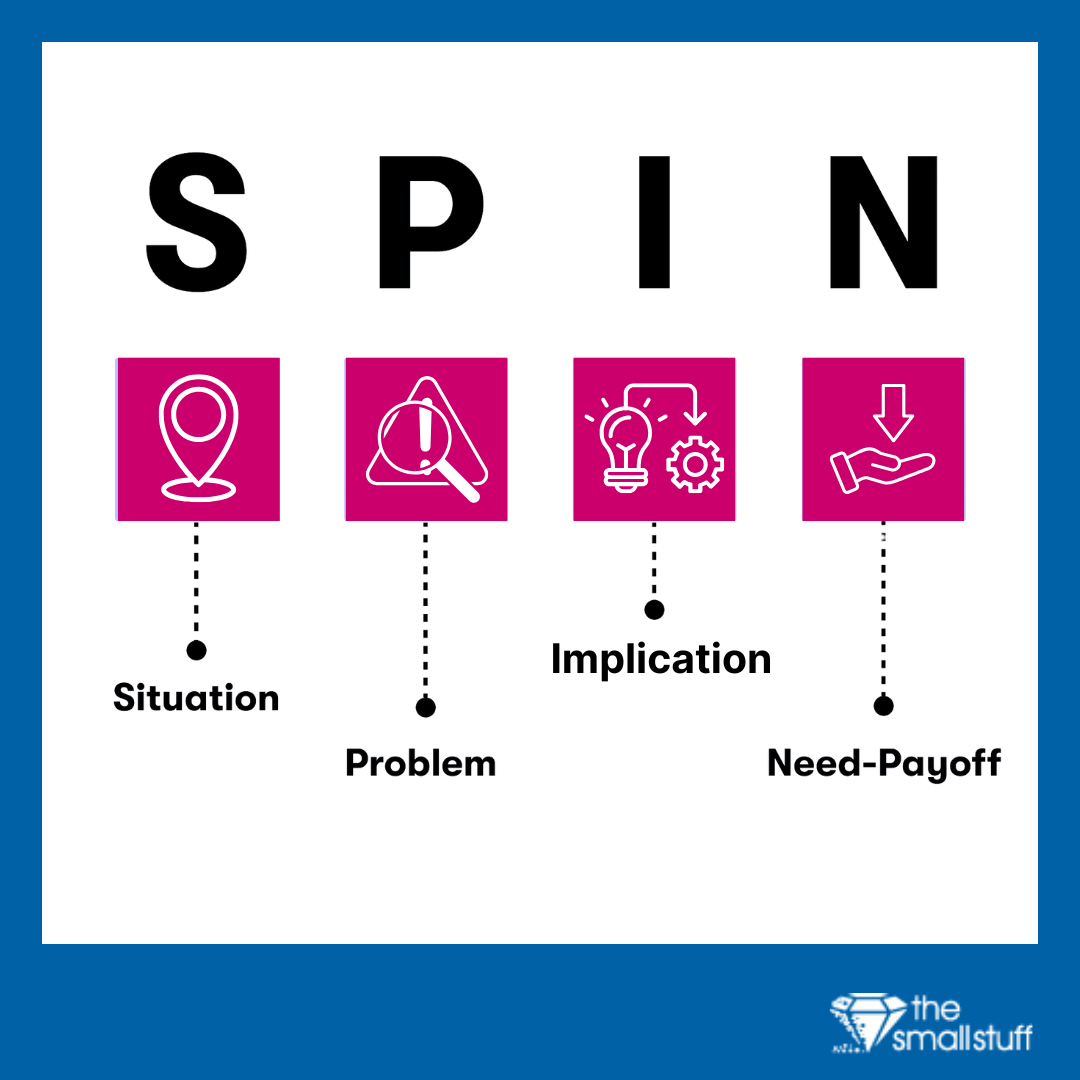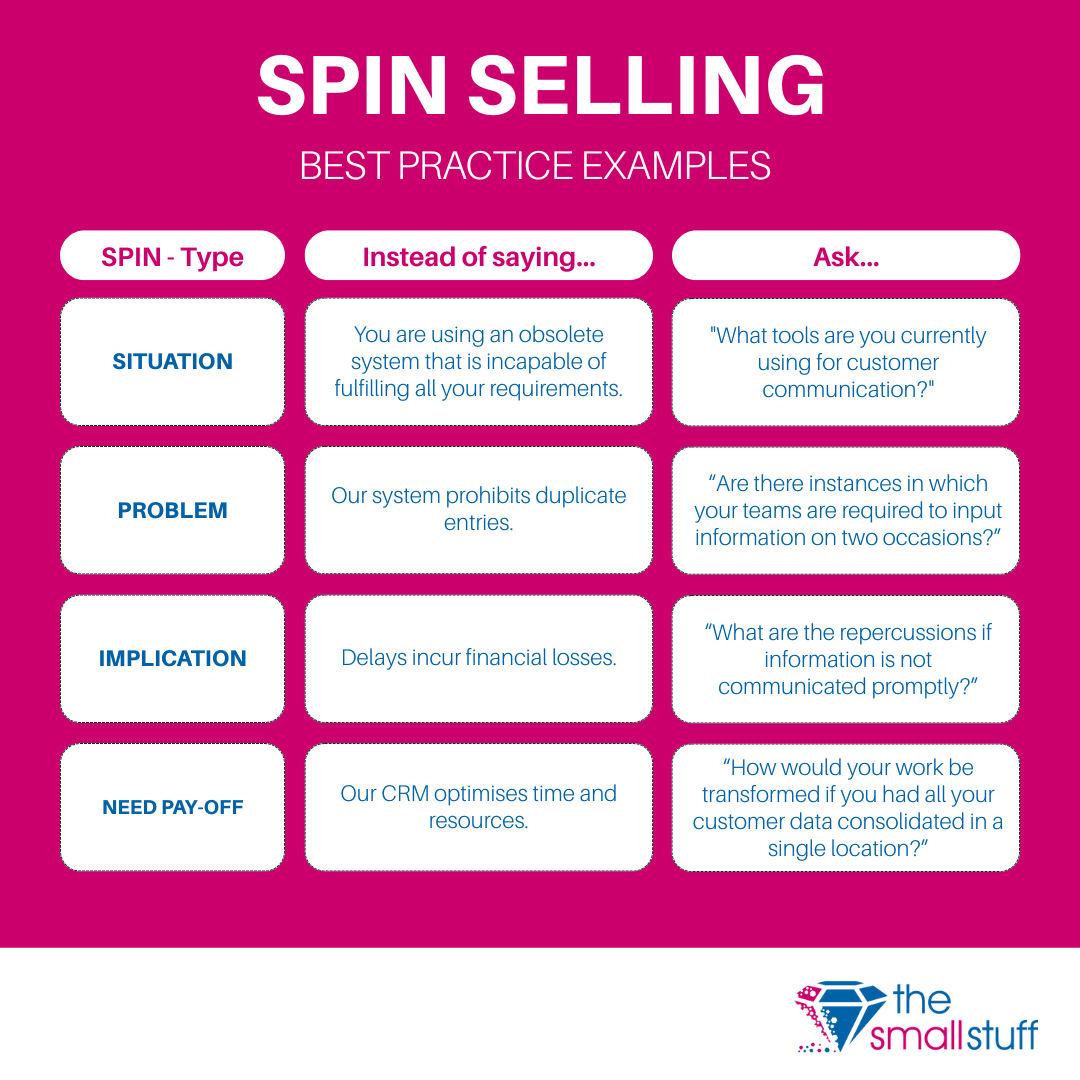Is SPIN Selling Still Relevant Today?
by Susannah Mathieson
Why a Sales Classic from the 1980s Still Works in the Digital Age
SPIN Selling. Many in sales have heard the term – some learned it in training, others use it intuitively without knowing the name. The model was developed in the 1980s by Neil Rackham, a British behavioural researcher, who, with his team, analysed over 35,000 sales calls to find out what really leads to successful deals.
But forty years is an eternity in sales. In an era of digitalisation, social selling, AI, and well-informed customers, the question is entirely justified: Is SPIN Selling outdated or more relevant than ever today?
In this article, we take a close look at the model, examine more recent research by Rackham from 2007, and arrive at a nuanced but clear conclusion.

What Exactly Is SPIN Selling?
SPIN is an acronym representing four types of questions used in sales conversations:1
- Situation Questions
Goal: To understand the customer’s current situation
Example: “How do you currently organise your ordering processes?” - Problem Questions
Goal: To uncover existing difficulties
Example: “What challenges do you face in inventory management?” - Implication Questions
Goal: To make the consequences of the problem clear
Example: “What happens if there is a supply shortage?” - Need-Payoff Questions
Goal: To help the customer see the value of a solution for themselves
Example: “How much time would you save if the process were automated?”
The method is based on the principle: people don’t like to be persuaded – they prefer to persuade themselves.
1 Rackham, Neil. SPIN Selling. McGraw-Hill, 1988.
“Top salespeople don’t tell the customer what to do. They lead them to insight through questions.”

The World Has Changed – Does That Also Apply to SPIN?
SPIN Selling was revolutionary at a time when many salespeople still relied on “hard selling.” But since then, the world of sales has fundamentally changed:
- Power of information lies with the customer:
Thanks to online research, comparison platforms, and social networks, many customers enter the conversation with pre-formed opinions. - Saturated markets:
In almost every industry, there are numerous providers with very similar products or services. The USP is no longer as obvious as it once was. - Complex B2B decisions:
Today, entire buying committees with multiple stakeholders are often involved, each with different interests and priorities. - Consultation instead of pure selling:
Customers now expect more than product information. They expect added value through advice, ideas, and perspectives.
So, the question is not: “Does SPIN Selling still sell?”
But rather: “How do we apply SPIN Selling today so that it works?”
Rackham, N. (1988). SPIN Selling. McGraw-Hill.
Rackham’s Later Insights: Rethinking the Sales Force (2007)
In 2007, almost two decades after the success of SPIN Selling, Neil Rackham, together with John DeVincentis, published another influential work: “Rethinking the Sales Force”
In it, he describes how the demands on modern sales have evolved:
- Salespeople today must generate value, not merely communicate it.
- The focus has shifted more towards strategic selling:
that is, long-term collaboration, co-creation, and developing individual solutions. - Sales teams need to adapt to different customer types:
not every client wants or needs complex consultation.
One important point in the book is the differentiation between “transactional selling” (when the purchase is simple and standardised) and “consultative selling” (when tailored advice is critical).
SPIN Selling is particularly well-suited to the latter.
Rackham, N. & DeVincentis, J. (2007). Rethinking the Sales Force. McGraw-Hill.
Why SPIN Selling Still Works Today
Whether we call it SPIN or not, the logic behind the method remains effective:
- Customers want to be understood before they are advised.
- People are more likely to follow ideas when they reach insight themselves.
- Good salespeople ask questions that provoke thought – not those that lead immediately to a pitch.
In our own sales work, we regularly draw on SPIN Selling. Often in a slightly adapted form, tailored to today’s market realities. We might call it “customer-centred questioning” or “diagnostic conversation design”, but the philosophy remains the same: the customer perceives value when they are actively engaged in thinking.
An example from practice:
Instead of telling a customer: “Our tool saves you 30% of your working time,” we ask:
“How much time do your employees currently spend on data entry, and what would you rather have them do with that time?”
(Situation & Need-Payoff question)
This creates a process of realisation that is more sustainable than any product presentation.
Here are a few more examples from the field:

Conclusion: SPIN Selling Remains Relevant – If You Develop It Further
SPIN Selling is not a relic; it is a solid foundation. In a world full of complex decisions, countless providers, and well-informed customers, you need trust, structure, and depth in your conversations.
SPIN provides exactly that. It encourages salespeople not to pitch but to understand. Not to talk but to listen. And to help customers realise for themselves why they should act.
If you combine SPIN Selling with modern concepts, train it, and tailor it to your target audiences, you can continue to use it successfully in 2025 and beyond.
Would you like to know how sales training can truly advance your team?
Book a free initial conversationFurther Sources & Recommended Reading
- Highspot Blog: What is SPIN Selling?
- Rackham, Neil (1988): SPIN Selling. McGraw-Hill
- Rackham, Neil & DeVincentis, John (2007): Rethinking the Sales Force. McGraw-Hill
- Huthwaite International: The Evolution of SPIN Selling
- Dixon, M. & Adamson, B. (2011): The Challenger Sale. Penguin Books
- Thull, J. (2003): Mastering the Complex Sale. Wiley

About the author
Susie Mathieson is the founder of the small stuff and has been working in and with sales teams for over 20 years. Her focus on motivation in a home office environment was the subject of her Masters (MBA) thesis in May 2020 and is a popular training topic amongst the small stuff clients.
Comments
Add a comment